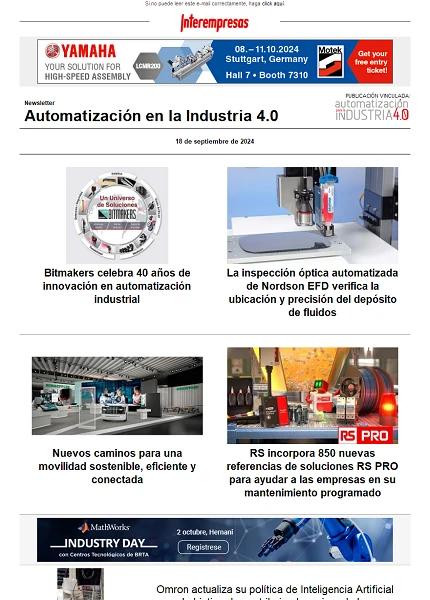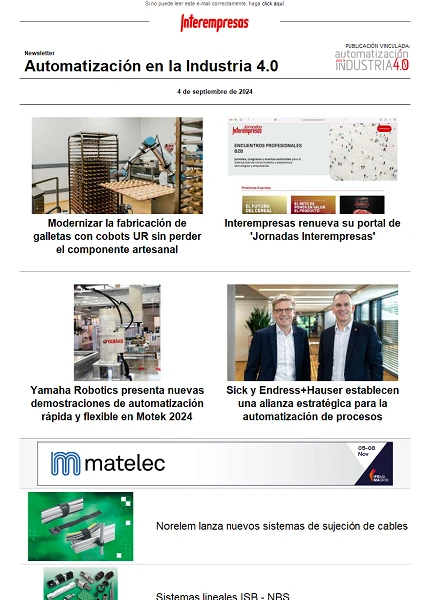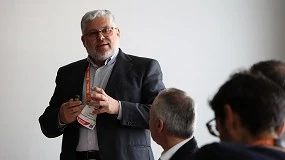Innovation in times of crisis

But… we can say that we were not aware of what was coming?. Being critical, I think that to some extent we were Yes, but it was certainly more comfortable to let us go by the bonanza. Now is the time leave behind the complacency and look beyond. To do so, first thing we must do is analyze realistically the situation of our Organization in the current environment.
In recent months are appearing together experts who give great recipes to ensure that our companies capeen the storm in the best possible way, but… are these really innovative recipes?. No desvelaré no mystery indicating that, in my opinion, are not, which does not remove any of the merit they have.
Making a synthesis effort, we can identify the following common patterns of action for the infamous shocks:
• Analysis of form criticism the supply of services and products of our Organization, identifying the most profitable ('cows') and enhance them. We must also identify those who are not strategic or do not offer a good return, and if necessary, get rid of them (unfortunately is common that this information is based more on perceptions or ideas as clear understanding of the return, cost and profitability of each of the services).
• Assess the cost of operations (OPEX) strategy, identifying all the fixed costs likely to be outsourced, and therefore become variable costs. At this point, I would like to take a break and highlight the interesting opportunity that opens up to the ICT hipersector, in areas as promising as the virtualization + green IT, cloud computing, software as to service (SaaS) or social communities, among others.
• Improve our management of clients, approaching them, knowing them better and, above all, to discriminate against the "good" of the 'bad guys' (not only based on the trite classic criteria of profitability and solvency, but others such as projection or strategic proximity).
• Increase (Yes, increase) our efforts in the generation of business, through a more commercial focus accompanied by a strengthening and reorientation of the marketing strategy for the organization. It is important to seek initiatives able to generate clear returns.
• Assess whether our staff meets the real needs of production in the short/medium term. In this sense, I can not help to advance without a part of the template does not always is the best estrategia… is perhaps best to consider an alternative use?
All these measures should not be exceptional approaches to take in ' bad times ', but rather a guide to responsible practices to follow in our day to day as executives, especially during the times of 'fat cows'... or anything not should question all these points systematically in our homes?shedding the less profitable/strategic lines and questioning the need for each spending?
Deepening at this point, and by way of conclusion, I more than agree with the main thesis that aired a few months ago managers of Sequoia Capital, the leading company of venture capital in the world to its portfolio companies: "R.I.P. Good Times'. They introduced a particularly interesting concept that has a lot to do with the pace of spending of our companies, known as 'the spiral of death', and that can be clearly understood in Figure accompanying paragraph.
In short, unless are available a financial muscle in a position (and still), backlog must guide our strategy in the short term, which must pass to be ruled by the circulating: lately is sadly common to listen to news that a company with a bulging portfolio of orders had to submit contest creditors to not be able to assume its costs or funding.
In general, all described initiatives are focused to improve results in the short to medium term account, but… what's beyond? What will be the position of our entity once leave the turbulent stage before us?. It seems likely that, if we take only the measures raised above, we find ourselves, after completion of this debacle, competing in a conditioned mainly by the price environment (Yes, the good times are gone and soon volver… if they do). Compete on price is the scenario in which we want to develop our future activity, or is there another way? Would it not be better to operate in a 'blue ocean'? (a classic example of 'blue ocean' has been the Nesspresso brand positioning).
After having evaluated a number of possible business reengineering strategies focused on the short/medium term, we must consider the future and trying to improve our position to emerge from this crisis for which we covered previously. Although this idea may sound utopian, nothing further from the truth: it is easy to look back at recent economic history and discover many examples of companies who have used a same lever out strengthened after a time of economic turmoil: innovation.
Although it may seem anachronistic, analyzed from the perspective of this discipline, it is now when some of the most interesting factors to a golden age of innovation, if we are able to look beyond:
• Availability of resources specialist at a reasonable cost
• Need to do things differently and optimize processes
• Competition focused on reducing your spending profile and getting rid of valuable staff
• Availability of multiple grants and public funds
However, it is necessary a bet determined by the Organization to be able to exploit this opportunity, which must be supported economically and culturally. If we decided to 'build windmills in the midst of the storm', the difficulties will be higher, but no doubt the fruits of the decision will be worth the penalty in the medium / long term (assuming that we have done our homework for the short, clear).
When we think of innovation, it is common to confuse her with the research and we come to the head and eccentric scientists with gown and gloves goma…. completely out of place in our offices full of white collar workers. But innovation has more to do with doing things differently, being research only one of the possible elements that we can introduce shaker (which must not rule out). I will not risk me to offer a formal of the same element of definition in itself controversial, but if to consider two different styles of deal with:
• The disruptive innovation is the one that, although in the short term they can offer a worse performance than the products they replace, WINS clearly the long-term consequence of a greater capacity for evolution. This type of innovation, by definition, will not come from the usual channels within our Organization. I think it exemplifies a very sharp form this form of addressing the innovation the sentence of Henry Ford, creator of the first car marketed on a large scale, the Ford-T: "If you had asked people what they wanted to, probably would have told me 'faster horse'"
• By contrast, sustained innovation is that has to do with improvement (may be radical or incremental) of processes or existing products within the value chain of our Organization, and whose profitability is much easier to prove. Innovations that fall into this approach usually do not imply a break with the current model of the company.
The choice that most of us will be launched at this very moment is... by which of the two approaches is more interesting to bet?. Unfortunately the answer is that both. Each of them has a different but complementary objective: the objective of sustained innovation is to improve our ability to compete in the not too distant future with new possibilities in the "weapons" available in our company, while the objective of the disruptive innovation is, on the contrary, create new "weapon" to be used in the future (but possibly not work so well in the present). An example of this dilemma is that of digital photography: Although at an early stage it was more expensive and less powerful than the analog, the end ended up imposing by its longer "route". Such innovations, by definition, must be out of the limitations of the daily life of the company and of easements of short-term financial results, either in a unit actually segregated or a spin-off. In many places this is not an option, so it is only possible, through a program of technology watch (whose detail escapes to this article), identify interesting initiatives that gambling (based on shareholding or agreements).
The above can be overwhelming for any of the companies which form the major part of the Spanish business sector, which does not have media or capacities to undertake this whole range of activities...., and that is how it should be. The time where innovation only could emerge in tight silos owned by large corporations fortunately passed into history. We live immersed in the knowledge society, and as a result the model of open innovation comes to our rescue. This model is intended to include within our company innovation networks to external actors who can help us with this process, as outlined below:
-In the phase of definition of ideas, should include all stakeholders, but certainly the customers are especially valuable
-Today is very costly to do research of basis within our organizations. The universities are excellent pillars where supported.
-With regard to coordination and advice, it is an excellent choice to rely on the technological institutes and government bodies, specialists on connecting actors and financing options.
-The integration phase is where our company must shine, not doubting in involving other companies (obviously managing through agreements and intellectual property potential overlaps).
One of the aspects which has not been touched, and which by its extension is complex to deal with, is the creation of a culture of innovation within the company, involving all layers and equipped with a genuine support and unequivocally by senior management, critical factor in the success of any initiative of innovation. We will not deal with the innovation of business models, that is as powerful as the one associated as the product, and it deserves a study ad-hoc.
In conclusion, it is important to consider the current situation as an opportunity to differentiate our company through a bet for innovation, no half-measures, which will allow us to position ourselves in an enviable position once completed this time of debacle…. luck!








